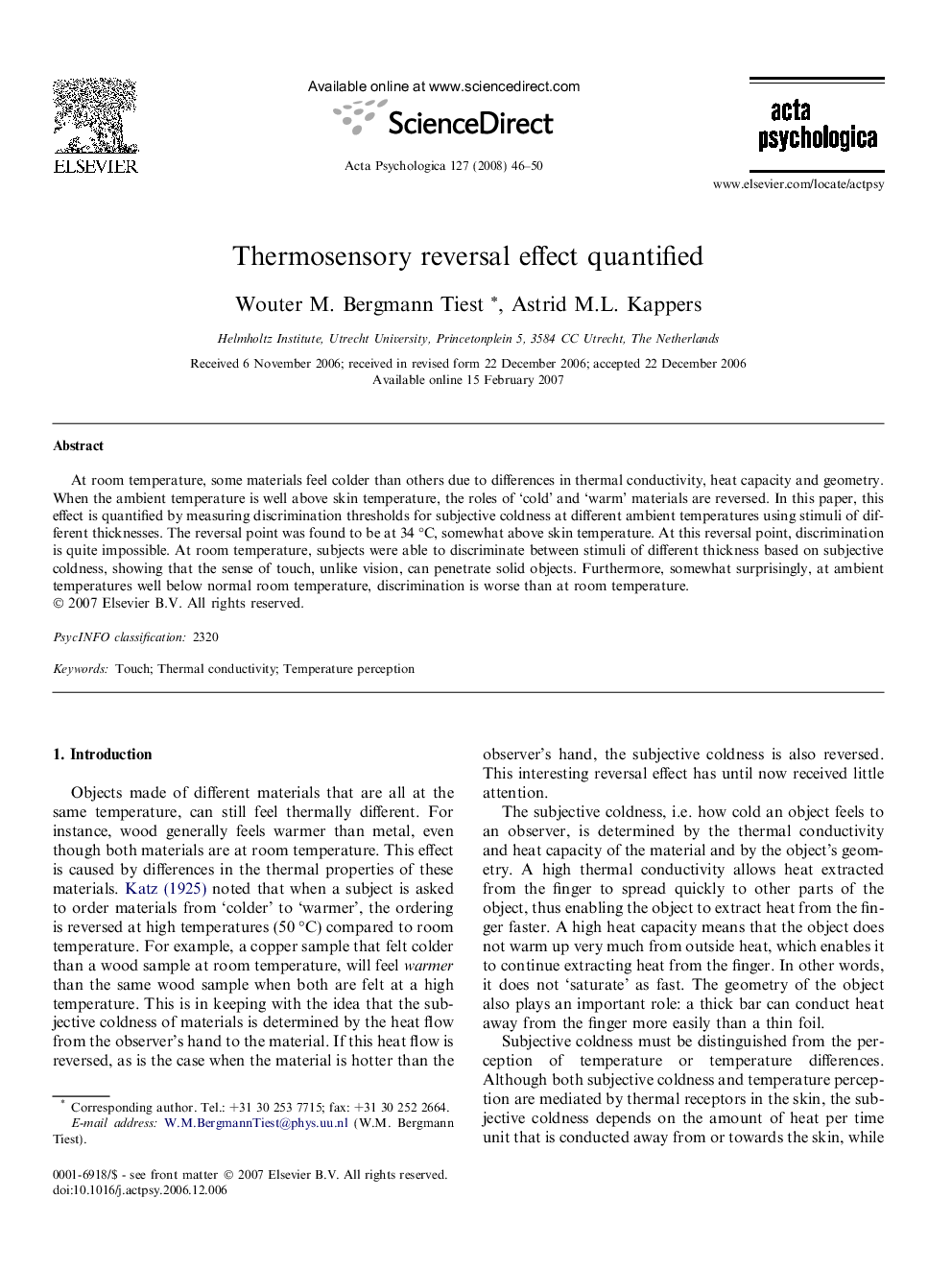| Article ID | Journal | Published Year | Pages | File Type |
|---|---|---|---|---|
| 920547 | Acta Psychologica | 2008 | 5 Pages |
At room temperature, some materials feel colder than others due to differences in thermal conductivity, heat capacity and geometry. When the ambient temperature is well above skin temperature, the roles of ‘cold’ and ‘warm’ materials are reversed. In this paper, this effect is quantified by measuring discrimination thresholds for subjective coldness at different ambient temperatures using stimuli of different thicknesses. The reversal point was found to be at 34 °C, somewhat above skin temperature. At this reversal point, discrimination is quite impossible. At room temperature, subjects were able to discriminate between stimuli of different thickness based on subjective coldness, showing that the sense of touch, unlike vision, can penetrate solid objects. Furthermore, somewhat surprisingly, at ambient temperatures well below normal room temperature, discrimination is worse than at room temperature.
